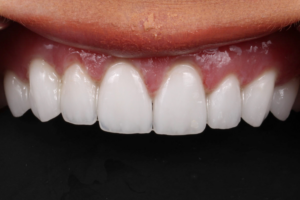 Amoxil Dosage Guide: Adults, Children, and Seniors
Amoxil Dosage Guide: Adults, Children, and Seniors
Adult Dosing Basics and Common Prescription Patterns 🩺
For adults, dosing depends on infection and severity: common regimens are 250–500 mg every eight hours or 500–875 mg twice daily, usually for five to fourteen days. Clinicians may prefer twice-daily high-dose regimens for respiratory infections to boost adherence, while skin and urinary infections often use standard dosing.
Tablets and chewables allow flexible prescribing; 500 mg tablets are common. Physicians tailor dose for obesity or severe infection; Teh aim is effective therapy with minimal side effects. Short five-day courses are used for some mild infections, others need longer treatment.
Practical patterns stress starting therapy promptly, taking with water or food if GI upset occurs, and completing the full course to avoid resistance. If adverse effects arise, contact your clinician; Occassionally a dose change or alternative antibiotic is required. Also report any new rashes, breathing changes, or severe diarrhea immediately, please.
Children's Dosing by Weight and Age Chart 📏

When a child is sick, parents want clear numbers. Teh chart below helps translate prescriptions into mg/kg and common age brackets, showing typical ranges for amoxil and reminding caregivers to weigh the child before dosing.
Typical pediatric dosing often falls between 20–50 mg/kg/day depending on infection severity, split into two or three doses. Syrup volumes should be measured with an oral syringe to avoid under or overestimation and ensure accurate delivery.
Dose caps for older children mirror adult limits; many clinicians cap amoxil at 500–875 mg per dose depending on formulation. Always double-check labels, ask the pharmacy for clarified instructions, and keep dosing consistent with meal timing.
If a dose is missed, do not double up; instead give the next scheduled amount and call your prescriber right away if unsure. If symptoms worsen or fever persists, recieve urgent medical advice.
Senior Adjustments and Kidney Function Considerations 👴
Teh older adult often metabolizes drugs differently: reduced renal clearance can prolong amoxil exposure, so clinicians usually lower doses or extend intervals. A short narrative helps—Mrs. Lane, 82, felt better after her doctor switched to a lower daily dose and scheduled more frequent kidney function tests. Regular monitoring of creatinine and eGFR guides safe therapy.
Practical tips: tell your provider about all medications and supplements, and make sure dosage instructions are clear for caregivers who assist with administration. Avoid abrupt discontinuation without medical advice. Dosing calculators and pharmacy consultations can Acommodate individualized plans, especially when dehydration or acute illnesses occur — these factors may necessitate temporary dose changes or follow-up to prevent toxicity and harm
Safe Administration Tips and Missed Dose Advice ⏰

Always measure liquid with provided syringe or a marked measuring spoon; household teaspoons are unreliable. For capsules, swallow whole with water. Store amoxil at room temperature away from moisture and direct sunlight, out of reach.
Take doses at regular intervals, ideally with food to reduce stomach upset. Continue therapy for the full prescribed period, not stopping Untill finished, even if symptoms improve. Talk to provider before altering the dosing schedule.
If you miss a dose, take it when you remember unless it's nearly time for your next one. Do not double up. Occassionally a delayed dose is less risky than overdose; consult pharmacist or physician.
Set alarms or use pill organizers to maintain consistency, especially for busy days. Keep a written log of doses and any reactions. If signs of severe allergy (hives, breathing difficulty) appear, seek emergency care immediately.
Drug Interactions and Allergy Warnings to Watch 🚫
Imagine reaching for a familiar bottle of amoxil when your pharmacist pauses—interactions can change outcomes. Tell your clinician about anticoagulants like warfarin, immunosuppressants such as methotrexate, or probenecid, since these can raise levels or alter bleeding risk significantly.
Also note some antibiotics may interact with hormonal contraceptives or increase rash risk when combined with allopurinol. Antibiotic use can impair oral live-vaccine effectiveness, so inform clinicians about recent courses before receiving typhoid or other live oral vaccines.
Allergies demand respect: if you have a penicillin allergy, or develop hives, facial swelling, wheeze, or sudden dizziness, stop amoxil and seek emergency care immediately. Definately inform providers about past reactions and carry documentation to prevent dangerous re-exposure events.
Side Effects, When to Seek Emergency Care 🚨
A sudden rash or swelling made Maria pause mid-dose, a reminder that common reactions to amoxicillin are usually mild: nausea, diarrhea, or a transient rash. Most effects resolve without intervention, and simple measures, taking with food and staying hydrated, ease discomfort. Keep a diary of symptoms and severity; this helps your clinician spot patterns and decide if a switch is needed. Seek immediate care for breathing difficulty, high fever, or spreading redness.
Teh first signs of anaphylaxis, hives, throat tightness, dizziness, or fainting, require immediate emergency care. Severe skin reactions or jaundice also demand urgent evaluation. Also report severe diarrhea with blood. If vomiting or kidney disease stops you from keeping medications, call your provider for alternatives. Never restart amoxicillin after a severe reaction; wear medical alert information and discuss safe substitute antibiotics with your clinician. MedlinePlus NHS












